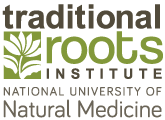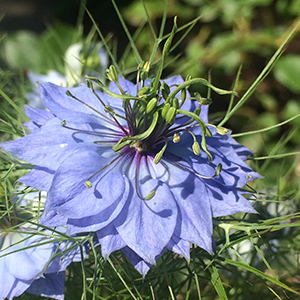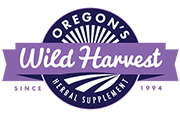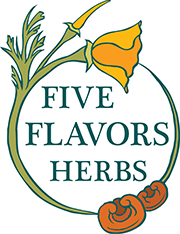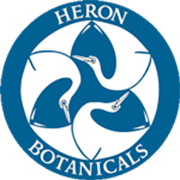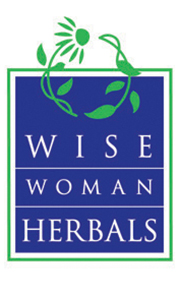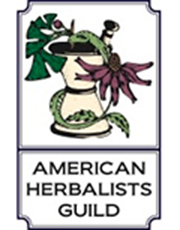Lydia Bartholow, PMHNP
Down in the Dumps: Depression, Inflammation and Botanical Intervention
This workshop explores the aspects of depression that are rooted in physiology, with specific emphasis on inflammation and mood disorders. We’ll begin by unpacking historical – and now disproven – theories of depression and mood dysregulation, and how old ways of thinking about mood disorders no longer serve us as natural healers. We then uncover the hidden narratives of inflammation, stress and immune response that ultimately impact our overall well being. We’ll review interventions that both increase and decrease systemic inflammation, including an extensive review of botanical medicines.
Paul Bergner
Botanicals, Biofilms and Chronic Infections
The discovery that most bacteria exist in fixed biofilm matrices, and that the biofilms can nearly completely evade attack by either host immunity or pharmaceutical antimicrobial agents, has led to new insights into the nature of difficult-to-treat chronic infections. Plants have been in an evolutionary arms race with biofilms for more than 700 million years and some have developed sophisticated methods of not only killing bacteria but also disrupting their their defenses and their ability to form or maintain biofilms. Recent research into the effects botanical agents on biofilms shows that many of our most effective traditional herbs for topical infection have multiple mechanisms of killing bacteria, inhibiting their ability to injure the host, or disrupting biofilms. We will discuss Allium sativum, Hydrastis canadensis, Mahonia spp, Commiphora myrrha, Arctostaphylos uva-ursi, and Acalypha mexicana, several other herbs and delivery media, and their possible effects on chronic wounds and ulcers, MRSA, and oral, sinus, bladder and vaginal infections.
Medical Cannabis and the Therapeutic Order
Cannabis is now legal for some medical purposes in 23 U.S. states and the District of Columbia, and millions of patients now take it on a daily basis for various health problems. The Therapeutic Order, from naturopathic practice, describes a clinical strategy that relies first on supporting the normal determinants of health and life such as diet, activity, rest, then on stimulating or supporting normal physiological processes with natural methods, or correcting physical lesions with bodywork or manipulation. Such methods may be curative, and may remove the cause of a condition. Lower on the therapeutic order is intervention with strong pharmacological agents – lower because these are not curative, and they produce side effects or distortions of normal physiological function.
The use of medical Cannabis may be necessary or desirable on a short or long term for some patients, but it is not curative for the conditions it is used to treat. Further, chronic daily use is associated with acute and chronic side effects, including increased tolerance, decreased effectiveness over time, and a withdrawal syndrome in habituated chronic users. Accumulating evidence indicates that subtle deficits in cognition and executive function are nearly universal in chronic users. Other side effects, such as the Cannabis emesis syndrome, or disruption of male or female reproductive function, are common in daily users yet are usually not recognized as side effects. We will present a review of some of the approved uses of medical Cannabis, with suggestions for supporting or alternative approaches. The presentation is based on a science review and results and statistics from a case series of 40 heavy daily Cannabis users.
Bevin Clare
Only Three Herbs: Approaching Epidemics with Affordable Medicines
What if you only had three herbs? Three common, safe, inexpensive herbs can offer prevention and care for some of the most common health care crises in underserved populations: diabetes, cancer and arthritis. Moving beyond the theoretical, we will look at the practical application of these three herbs in food, as medicine and as integrated into a more conventional clinical model to offer optional care. Diving into the evidence base for each of these botanicals, we will explore the documentation and rationale which is often needed to bring botanicals into an integrative care environment in order to further possible change.
Delicious Medicines: Botanical Powders Applied Clinically for Chronic Disease
While effective and desirable, botanical medicines can be prohibitively expensive for many, including underserved populations with chronic disease. Learn how to integrate botanical powders seamlessly into daily foods and other creative preparations to offer accessible, effective and safe medicines. Many practical strategies and recipes will be shared, tasted, and experienced in this interactive class.
Educators Lunch
Grab your food and come sit at the teacher’s table! This informal lunch group is an opportunity for teachers to share their successes, challenges and innovative ideas about productive pedagogy.
Mimi Hernandez, MS, RH (AHG)
Clinical Case Panel — Pediatric GERD
Hanna Jordan, LCSW
Clinical case panel: Anxiety
Juniper Martin, ND
Clinical case panel: Anxiety
Glen Nagel, ND
Astringent: The Power of the Pucker
This class takes advantage of the Min Zidell Healing Garden as a laboratory for a discussion of tannins and other astringents in nature. We will discuss types of tannins, clinical uses of astringents materia medica including agrimony, lady’s mantle, green tea and others.
Herbal Medicine Dosing: What is right for your patient?
When using herbal medicines, sometimes more is less. And sometimes less isn’t enough. We will discuss the difference between pharmacological prescribing and physiological or energetic prescribing, considerations for each, and the resulting therapeutic outcomes.
Tania Neubauer
Garden Medicines for Common Digestive Complaints
Work with digestive issues in fun and simple ways using herbs your patients can grow in their gardens. We will taste teas, tinctures and the living plants themselves. From acid reflux to leaky gut, from GI bleeds to diarrhea, the cure could be growing in your backyard! We will explore links between the GI and mental health and briefly review common pharmaceuticals seen in practice for gastrointestinal concerns.
Tobias Policha, PhD
Introduction to Herbal Actions Through the Senses
For the beginning herbalist learning all of the specific information about dozens or hundreds of herbs can be over-whelming. By understanding a few of the major herbal actions and how they are expressed in the plants, we can begin to develop a palette of herbal actions that are reflected in how we perceive the plants. For example: Instead of memorizing that such-and-such an herb is good for digestion, it may be helpful to understand how bitter and aromatic plants affect the digestive system. This opens up an array of plants that can be used for digestion based on readily accessible plant traits that we can smell and/or taste. In this workshop will will discuss important herbal actions including bitters, aromatics, astringents, and demulcents/emollients. We will cover indications, uses, and how to ascertain the above using organoleptic testing. This workshop will be accessible for the beginner, but through the extensive use of examples and samples, the intermediate or advanced herbalist is bound to add something to their repertoire.
Botanical Identification for the Herbalist
The most important foundation for healing with plants is knowing what you are putting in your body. The difference between medicine and poison can be the difference in the shape of a fruit or the venation of a leaf. While becoming a proficient botanist can take years to hone, learning the basics of botanical identification and plant family recognition can open the door to the plant world relatively easily. Using the Min Zidell Healing Garden as a laboratory, we will focus on floral morphology, vegetative diversity and learn family characteristics for some of the more common families that are rich in medicinal species. Understanding plant forms teaches us about plant relationships, which in turn informs our usage, through shared chemistry or similar actions. Please be prepared to be outside.
Kevin Spelman, PhD
Echinacea Update
While probably the majority of us herbalists use a significant amount of Echinacea species for a variety of infections, there are other uses that are not well known that should be discussed. For example, recent research suggests that E. purpurea and E. angustifolia may be useful for metabolic syndrome and Type II diabetes. Other research finds that E. purpurea may be useful as a sports and a high altitude aid. While still older uses include wound healing. We will review these “other” uses and update the knowledge base on this exceptionally useful medicinal plant.
Pharmacokinetics and Pharmacodynamics of Medicinal and Food Plants
The typical pharmaceutical model is based on one isolated chemical and the pharmacokinetics and pharmacodynamics are based on the characteristics and activity of this single chemical entity. This model (really, the only pharmacological model currently employed in medicine) is superimposed on medicinal plant extracts and food plants to purportedly understand their pharmacology. Yet, due to the multi-constituent nature inherent in plants, this model is misleading, and frequently leads to simplistic conclusions about the pharmacology of plant based medicines. We will review examples of pharmacokinetics and pharmacodynamics of plants and their extracts that do not fit the reductionist model that lead to more enhanced understanding of complex phytochemistry. This provides insights into formulation and dosing.
Jillian Stansbury, ND
Botanical Influences on Neurotransmitters: Neurophysiology Basics
This class offers an overview of herbs that support mental health by promoting specific neurotransmitters. We will cover neuronal transmission via the primary brain neurotransmitters including dopamine, serotonin, GABA, melatonin, epinephrine, norepinephrine, acetylcholine and glutamine.
Botanical Influences on the Neuroendocrine System: Clinical Applications
This class expands on the vocabulary, physiology and materia medica introduced in Neurophysiology Basics and further details how neurotransmitters influence a variety of common health disorders including anxiety and depression, cognitive disorders, and mixed endocrine issues such as PCOS, stress and HPA axis disorders, and thyroid disease.
Nicole Telkes, RH
The Poison Path: Working with Drop-Dosage Herbs in Practice
The difference between medicine and poison is indeed dosage, but some feel drawn to explore the shadows: the path of using toxic botanicals. What is a poison? What some many would call poison, might not be so for others. Not all herbalists feel called to this realm, but for those that do this is an opportunity to go deeper. We will cover uses, parts used, preparation, safety and other considerations when employing these plants in the practice of modern herbal medicine. We will also compare how some of these are used in homeopathic medicine and flower essence therapy versus whole plant preparations.
Fire Cider: Traditional Medicine in Modern Times
Fire Cider is a traditional remedy made and loved by thousands in North America. We will learn Fire Cider’s history, how to make it, when to use it – and how Fire Cider became a fiery controversy.
Plant Provings
Traditional, holistic systems of medicine understand that in order to offer remedies and true paths to healing we must be able to not only know their actions, but their qualities and what areas of the body they affect. Today, evidence-based medicine values data in the form of clinical trials. We will be gathering data in the form of organoleptic learning, finding patterns through sipping tea and doing a plant proving. Plant sits often are used to help understand the spirit of the plant, but in this workshop we will dissect the physiological workings of a plant we ingest. We will look at flavors, qualities, and how sort through and define actions in the body.
Eric Yarnell, ND
Antifibrotic Herbs
Fibrotic/sclerotic/cirrhotic conditions are widespread and generally have no good conventional treatments. Herbs that can both prevent and treat these conditions will be reviewed in depth, including Centella asiatica, Silybum marianum, Astragalus membranaceus and Salvia miltiorrhiza, among others. We will discuss the proper indications, underlying mechanisms and appropriate clinical application for each.
Interaction Between the Gut Flora and Herbs
Many medicinal constituents in herbs are metabolized by the gut flora. Though long documented, the clinical relevance of this has only recently been understood. We will review constituents that tend to be metabolized (including through enterohepatic recirculation) and how this occurs. We will consider whether or not dysbiosis is to blame for clinical failures, and review the effects of antibiotics on herbal efficacy will be reviewed in this light. And we will review in depth the specific case of equal formation from isoflavones in medicinal foods and herbs to illustrate the importance of this subject.
Ben Zappin, L.Ac.
Clinical Case Panel: TBA
Botanical Analogues: Western Native Plants and East Asian Materia Medica
What can we learn about Western states native plants from related plants from East Asian materia medica and medicine? This course will look at botanical and biochemical relationships and explore ways to make therapeutic decisions with native plants based on information from traditional models. This class emphasizes both practical and reliable methods gleaned from Ben’s experience and offers a template of critical thinking skills to apply in the participants on practice and personal exploration.
